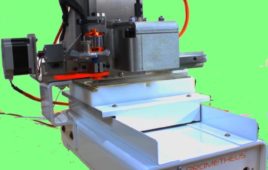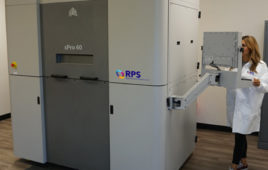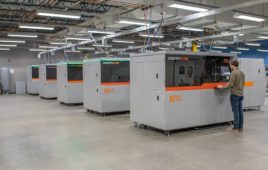We encountered a revolution in the early 1980s in engineering design, with rudimentary 2D drafting systems and manual intensive analysis packages. They offered increased productivity as well as the ability to reach the physical prototypic and testing stage with much greater certainty in the product’s performance.
More recently, the computer-based design tools available to engineers have steadily increased in both range and sophistication, resulting in the fully integrated 3D modelling and multi-physics analysis tools available today. They have also decreased substantially in cost which, together with the growth in computing power and advances in computing infrastructures, means that today’s engineer can develop concept designs, create fully detailed 3D models and perform a wide range of analyses and simulations on the desktop.
The advances that have made this level of accessibility to engineering tools possible are primarily in the areas of system integration, ease of use and processing power. The exchange of geometry between CAD and simulation and analysis systems has become practically seamless, even between systems from different vendors.
For vendors that offer a suite of tools, moving between systems is largely a matter of simply moving to a different set of menu options. For many types of analysis, even those of some complexity, much of the groundwork of setting up the model in the required form is now largely handled intelligently by the system ‘behind the scenes.’ And of course, the levels of computing power available to desktop users are now huge, whether through exploitation of the cloud or by adding power locally in the form of processors dedicated to the kinds of tasks associated with computer-aided engineering. What is more, the power required is highly affordable.
The availability of such integrated, sophisticated and easier to use engineering tools on the desktop has far-reaching implications for most industries. Firstly, it offers the prospect of a fully integrated design process in which the simulation and analysis steps for all physical aspects are embedded seamlessly into the design engineer’s workflows. That is not to suggest that a rigorous analysis by simulation and analysis specialists can be eliminated, but the design engineers’ ability to perform initial analyses does mean the specialist’s involvement comes at a stage at which the design should already be quite robust.
Of course, the extent to which the technology can impact the design process depends on the ability of an organization to absorb such potentially disruptive changes into its workflows and this varies widely with industry. The aerospace sector, for example, is certainly deriving benefits such as improved designs through the ability to explore more options, reduced development time through delaying physical prototyping, eliminating waste associated with over-engineering and so on. But it must also maintain the carefully staged and controlled approach to component, sub-system and integrated system design that has evolved over many decades. In contrast, less complex, more fast-moving industries can modify their work practices more readily.
The second implication of the advances in desktop engineering tools is that many more organizations can take advantage of these technologies. For any industry, the result is a ‘raising of the bar’ in terms of almost every aspect of product performance – functionality, safety, reliability, cost, environmental impact and, for many products, aesthetic appeal. As a result, computer-aided simulation and analysis tools are becoming essential design resources, even for small companies in sectors for which such tools were previously considered overkill. It also means that small companies with access to today’s desktop engineering design tools can compete in some of the areas that have only been within the capabilities of larger companies with heavy investments in design technologies. The market therefore seems likely to be self-sustaining – one reason why Cambashi’s market data for technical applications sector continue to show growth!
A third major implication is managing the engineering data that result from widespread access to design tools. For large companies, the volume and scope of the data generated by more engineers performing a wider range of tasks is likely to put pressure on their product data management environments. For small companies, it may well be raising the new requirement in terms of managing product data! The good news is that the vendor community is responding to this need by developing more accessible technology in this area too.
Tony Christian is Director for the research analyst and consulting company Cambashi (www.cambashi.com). Tony has a wide range of experience in engineering, manufacturing, energy and IT. His early career was in technical R&D roles, after which he moved into computer-aided engineering. His subsequent roles included divisional head of the IT subsidiary of a major international engineering and construction company and leadership of teams developing and implementing state of the art manufacturing control systems at British Aerospace. More recently, Tony was a director of the UK Consulting and Systems Integration Division of Computer Sciences Corporation (CSC), leading a consulting and systems practice for manufacturing industries, and then Services and Technology Director at AVEVA Group plc where he was responsible for all product development and the company’s worldwide consulting and managed services business.
Tony has a BSc degree (Mechanical Engineering) and MSc degree (Engineering Acoustics, Noise and Vibration) from the University of Nottingham.
Filed Under: Rapid prototyping




